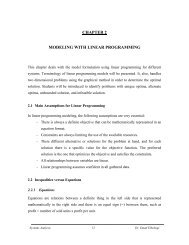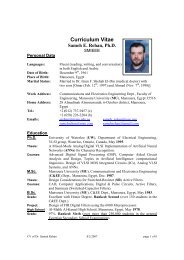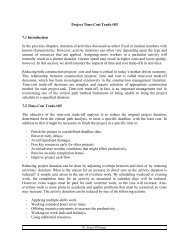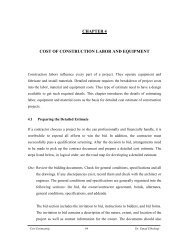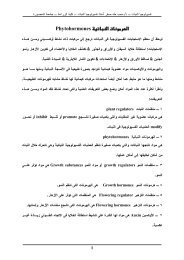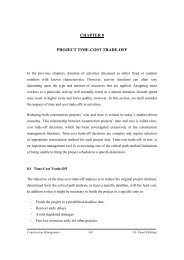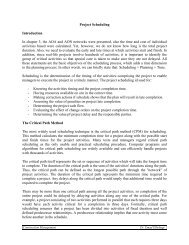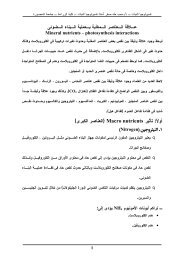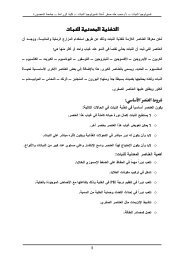Thyroid and Parathyroid
Thyroid and Parathyroid
Thyroid and Parathyroid
You also want an ePaper? Increase the reach of your titles
YUMPU automatically turns print PDFs into web optimized ePapers that Google loves.
<strong>and</strong> the thyrothymic tongue of fat (thyrothymic ligament) that extends inferiorly<br />
toward the mediastinum. Many inferior parathyroid gl<strong>and</strong>s are subcapsular, i.e.,<br />
attached to the inferior aspect of the thyroid lobe <strong>and</strong> covered by a thin layer of<br />
fibrous tissue. This does not represent an intrathyroid parathyroid gl<strong>and</strong>, as is often<br />
erroneously assumed. To be truly intrathyroid, the parathyroid gl<strong>and</strong> should be<br />
. circumferentially surrounded by thyroid parenchyma<br />
If the superior parathyroid gl<strong>and</strong> is not visualized, the tracheoesophageal groove<br />
should be explored digitally. Enlarging superior parathyroid adenomas often descend<br />
into this groove <strong>and</strong> can be palpated accurately by inserting a finger into the avascular<br />
space immediately superior to the inferior thyroid artery (Fig. 36-52). Such gl<strong>and</strong>s are<br />
often located inferior to the inferior parathyroid gl<strong>and</strong>s. The parathyroid gl<strong>and</strong>s can be<br />
found from as high as the angle of the m<strong>and</strong>ible or the base of the skull (undescended<br />
parathymus) to as low as an intrathymic location in the anterior mediastinum or in the<br />
. aortopulmonary window in the posterior mediastinum<br />
In the h<strong>and</strong>s of an experienced surgeon, a negative exploration usually is the result of<br />
an unusual variation in embryologic descent. The following rule is useful in this<br />
situation: If the superior parathyroid gl<strong>and</strong> is not found in its conventional position,<br />
the surgeon should search inferior to the inferior parathyroid gl<strong>and</strong> for the superior<br />
parathyroid gl<strong>and</strong> (tracheoesophageal groove); conversely, if the inferior parathyroid<br />
gl<strong>and</strong> is not found inferior to the superior parathyroid gl<strong>and</strong>, the surgeon should<br />
search superior to the superior parathyroid gl<strong>and</strong> for the inferior parathyroid gl<strong>and</strong><br />
(undescended parathymus). If these simple maneuvers are unsuccessful, the surgeon<br />
should become suspicious that the offending parathyroid gl<strong>and</strong> might be in one of the<br />
: following locations<br />
In the thymus. A fairly complete transcervical thymectomy should be performed<br />
. to search for the missing inferior gl<strong>and</strong><br />
Within the thyroid. Truly intrathyroid gl<strong>and</strong>s are exceedingly rare. Most so- ( 2)<br />
called intrathyroid parathyroid gl<strong>and</strong>s are inferior parathyroid gl<strong>and</strong>s located beneath<br />
. the thin veil of the thyroid capsule <strong>and</strong> can be easily teased off the thyroid<br />
In the carotid sheath. This is extraordinarily rare, but opening the carotid sheath<br />
. should be considered when all other possibilities have been ruled out<br />
Lateral to the carotid sheath. This location is even more unusual than in the<br />
. carotid sheath, but the parathyroid gl<strong>and</strong> can hide laterally<br />
Routine bilateral exploration is recommended in all patients. If a single adenoma is<br />
identified, excision of this adenoma, without biopsy of normal gl<strong>and</strong>s, is suggested. If<br />
hyperplasia is documented, all but approximately 50 mg of clearly viable parathyroid<br />
tissue is excised <strong>and</strong> routine transcervical thymectomy is performed. With the<br />
approach outlined, surgical success should approach 99 percent. Permanent laryngeal<br />
. nerve palsy or hypoparathyroidism occurs in less than 1 percent of patients<br />
Persistent <strong>and</strong> Recurrent Hyperparathyroidism<br />
Almost twenty years ago, Wexler stated, “Persistent hypercalcemia in suspected<br />
hyperparathyroidism is due to an improperly performed primary operation.” This<br />
( 4)<br />
( 1)<br />
( 3)



